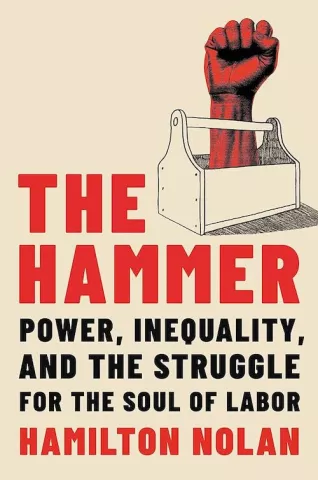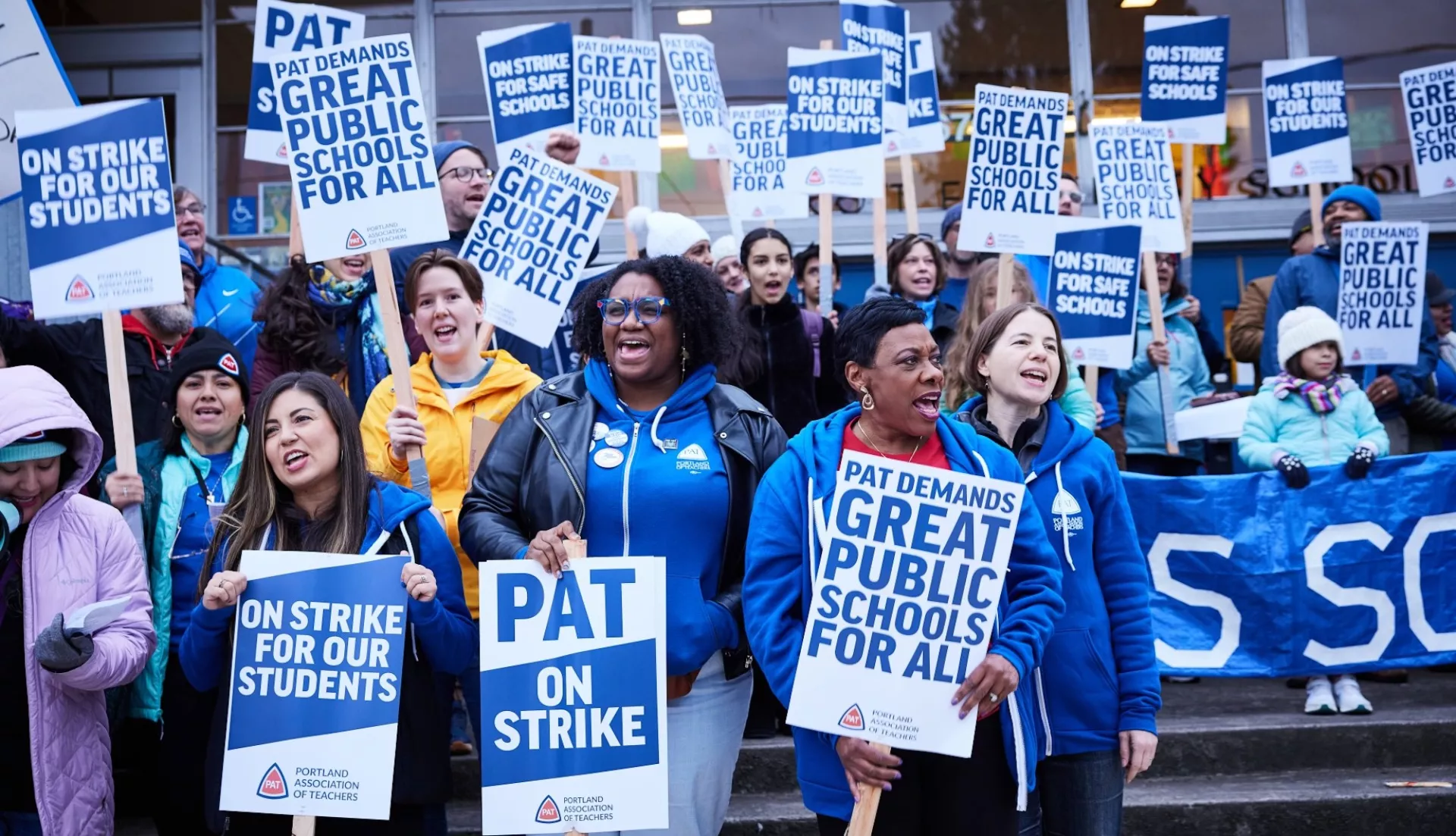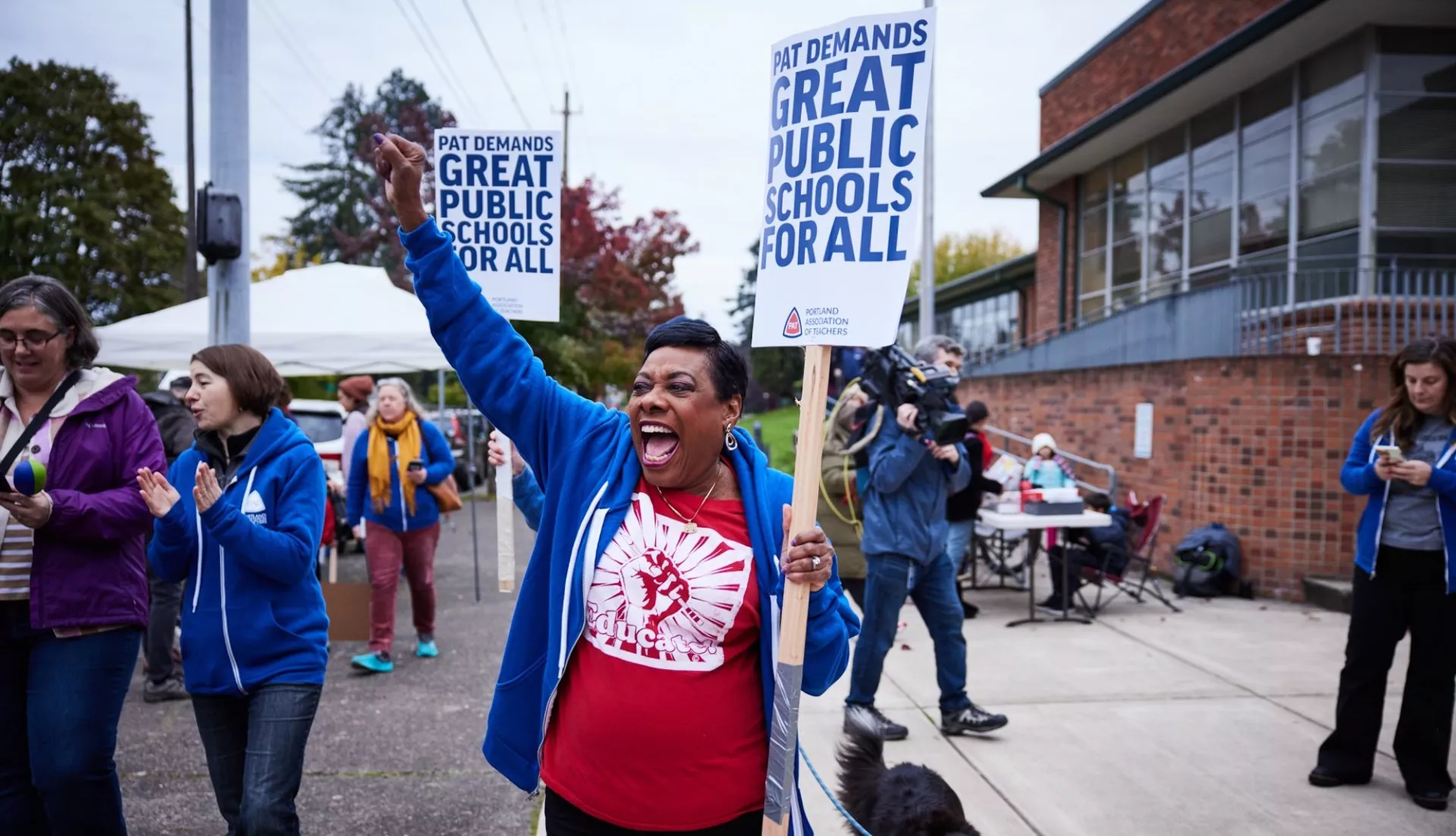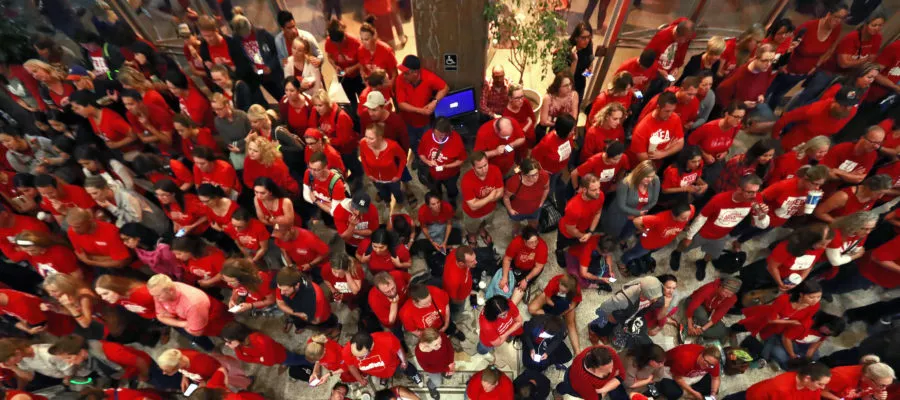“Why [do] we have such gargantuan levels of inequality?... Why [is] it that certain classes of people work hard their entire lives and stay poor, just as their parents, and just as their children seem doomed to be?”
A decade ago, these are the questions that racked Hamilton Nolan’s brain. Eventually, Nolan, a labor journalist who recently published a book, "The Hammer: Power, Inequality, and the Struggle for the Soul of Labor," realized that labor unions are “central to all our fundamental problems.” And today, he sees them as the answer—if only unions and union members will realize their power and do the necessary work of growing in number and growing in power. Recently, he talked with NEA Today.
Let’s talk about the labor movement. Where do you think we are and where do you think we could or should be going?

Hamilton Nolan: We are in a time of great potential...The current political landscape is favorable. Public opinion is very favorable—people want what unions have to offer! The question is what will people in the labor movement do with this opportunity? Will we seize the moment?
Do you see teachers, faculty, school bus drivers, cafeteria staff, and other education workers as part of the broader labor movement?
HN: I see teachers’ unions as almost the heart of the labor movement. You all have some of the biggest numbers in the entire labor movement and probably the most influence of any specific job, in terms of size and strength. The nature of the labor movement makes it hard for people [in different work environments] to feel connected. We have our own jobs; we have our own fights. It’s natural for people to feel like, ‘am I a part of it?’ But yes, you are.
What Is the One Key Message that Hamilton Nolan has for Union Members?
Elapsed time: 0:00
Total time: 0:00How do you think educators should get involved in the larger labor movement?
HN: Get involved in your own union, first of all. Take all that energy you have for change in society and point that into your union. Attend meetings. Get active. Run for positions in your union. In a lot of ways, that kind of politics is a stronger, more permanent source of power than electoral politics.
You write about states where it’s hard to be a union member, like South Carolina. What’s your answer to people who say, “Oh, I wish I had a union but I live in [fill in the blank].”
HN: First of all, my answer is that having your union is your right, no matter where you live. Nobody can tell you can’t have a union. If you want a union, contact a union and start organizing.
I also think that, in places where most people don’t have unions, the only really solid, existing unions are teachers’ unions. And that can be a launching pad. There’s no reason teachers have to feel like their influence can’t extend beyond the end of school. Teachers’ unions can be the base of building the labor movement in those states where a lot of other people don’t have access.
Quote byHamilton Nolan , Author, "The Hammer: Power, Inequality, and the Struggle for the Soul of Labor"

You write a little bit about the mentality of American workers who think they’re lucky to have jobs—even though they're really making money for other people—and how that mentality is a learned attitude. It makes me think that NEA members could have a role in teaching students something else. Is that just a matter of teaching labor history or is it fundamentally changing the way classrooms work?
HN: It’s both! But first, the one thing that would be easiest is to teach labor history. [It] is not taught in America, period. You can go through 12 years of public school and never encounter any labor history in the curriculum. The Civil Rights Movement gets some attention, but the Labor Movement, which also has been bloody with a lot of social impact, isn’t taught—and I don’t think that’s a coincidence.
It would be great if kids would know what unions are. It sounds so basic, but kids never learn what unions are, why they exist, how they benefit people, and the role they play in society and capitalism. Teaching just that would be incredibly valuable.
And also, if you think about the democratic way that unions operate, if you could run your classroom in a more democratic sense, maybe that would help inspire people for democracy… but maybe that’s above my pay grade!
Random question, but what do you think about the explosion of grad assistant unions? [These are unions made up of graduate students who are employed as research or teaching assistants at their universities.]
HN: I think it’s a really healthy development for the labor movement. You can look at the lists of the biggest organizing drives in America every year for the past several years, and most of them are grad worker units and higher ed workers. Mathematically, it’s the most active union organizing space in America. There’s a lot of energy there! P who are well educated—and also underpaid and exploited—are sort of a sweet space for labor organizing in a lot of ways.
The most exciting thing to me is that all these people who are grad workers, who are going through this process of organizing and bargaining contracts, and having this first-person experience with unions, most of them are going to go into the world and do other stuff. And they will carry that [union] experience with them. In the broader sense, the whole higher ed union movement can be like Johnny Appleseed for labor organizing, going out into society in the years and decades to come.
I’m sure you’re familiar with Red for Ed—the national movement of statewide teacher strikes that started in West Virginia in 2018 and went on to Oklahoma, Arizona, etc. When you write or talk about recent energy in the labor movement, do you see Red for Ed as part of that?
HN: Red for Ed was a major part of the pre-pandemic, grassroots wave of union energy. It definitely laid the groundwork for the energy we’re seeing now, in terms of it being a member-driven, member-led uprising from the grassroots. And they succeeded, to some extent at least, in the most hostile states for labor! When I was reporting this book, a lot of people said, ‘We saw Amazon. We saw Starbucks.’ But before that, the thing that inspired them [to unionize] was Red for Ed.
One last question, if there’s one message you wish union members would take away from your book, what is it?
The message is ‘organize the next person.’ The future of the labor movement is organizing many, many more people. Don’t just look into your union, and what’s going on in your union. Look out into the world and into society and think about how we can spread this movement and give other people the stuff we have as union members.
Why Did Hamilton Nolan Call His Book 'The Hammer'?
Elapsed time: 0:00
Total time: 0:00Suggested Further Reading






